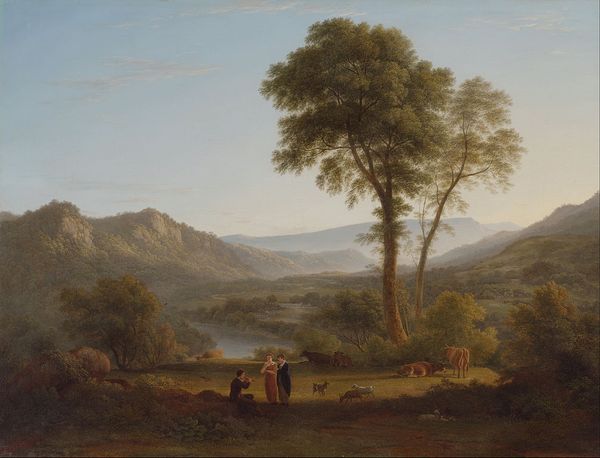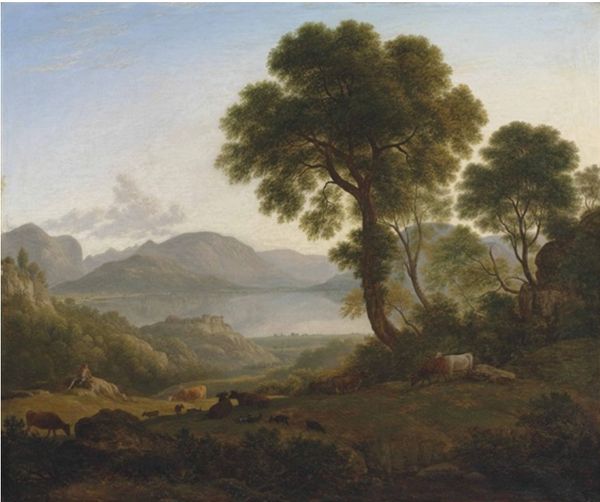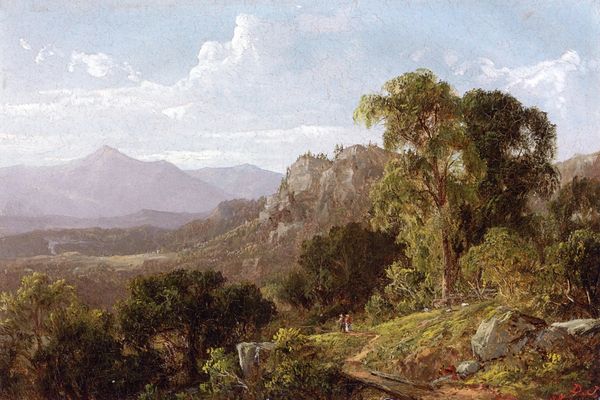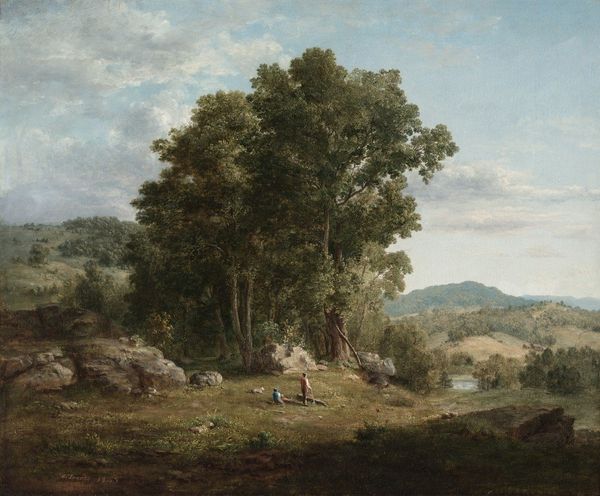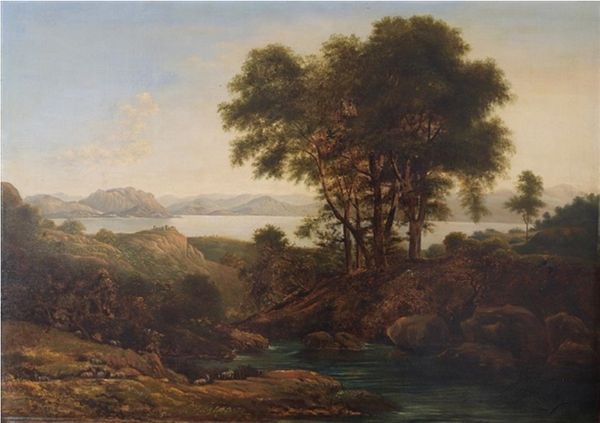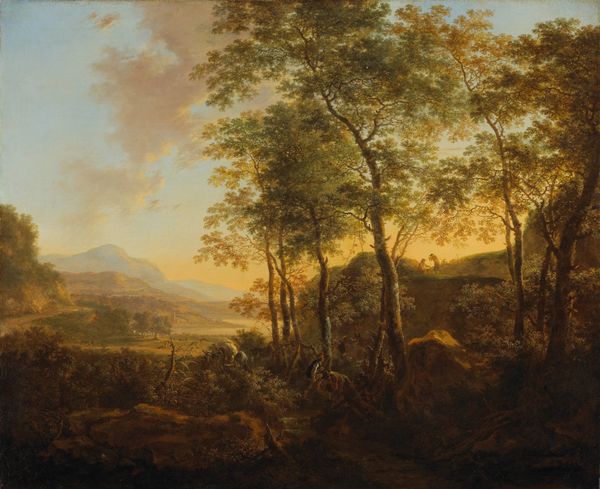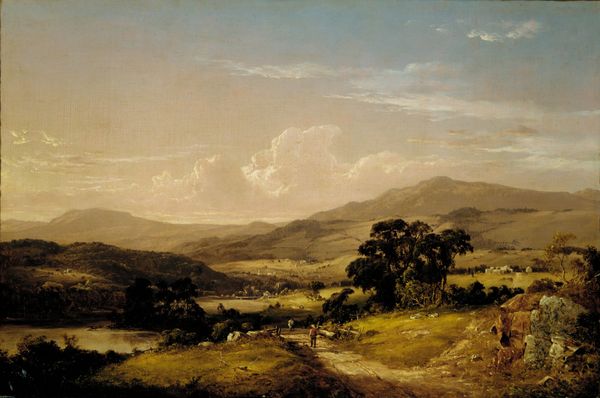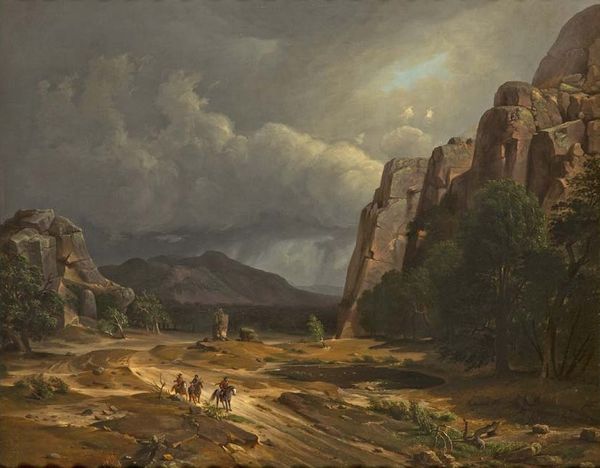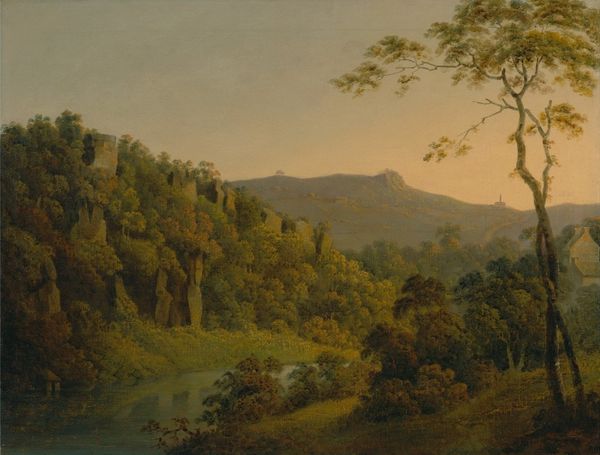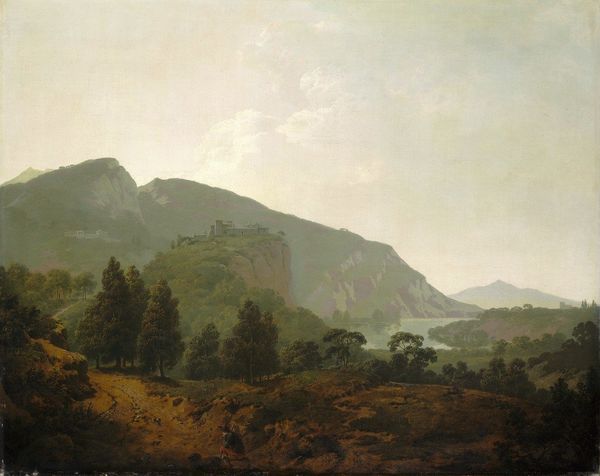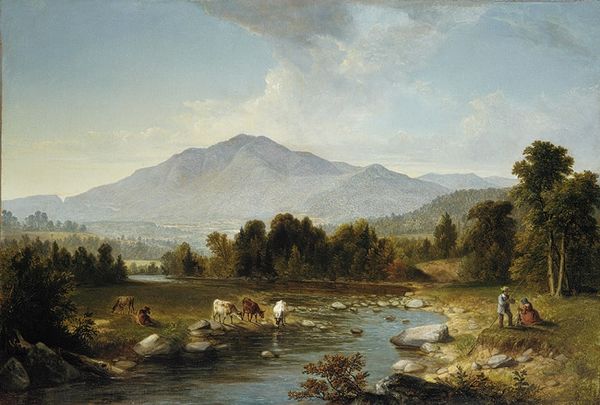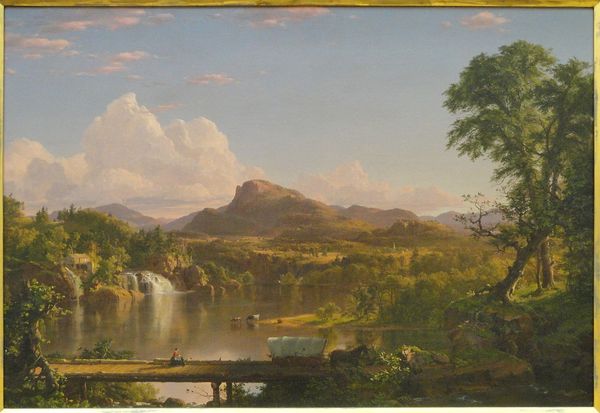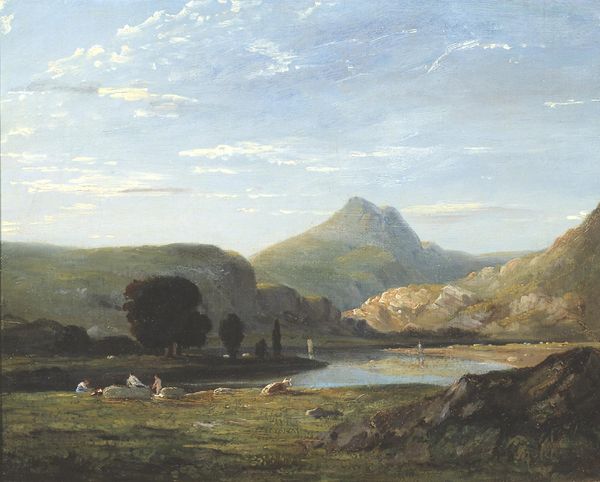
plein-air, oil-paint
#
tree
#
grass
#
plein-air
#
oil-paint
#
landscape
#
figuration
#
oil painting
#
romanticism
#
hudson-river-school
#
watercolor
#
realism
Copyright: Public domain
Editor: Here we have Asher Brown Durand’s oil painting, *Dover Plain, Dutchess County, New York*. There isn't a confirmed date, but it gives such a strong sense of serene, almost idealized, American landscape. What do you see in this piece? Curator: I see a pointed commentary on land, ownership, and the myth of the pastoral. Look at the figures: are they integrated *into* the landscape, or posed *on* it, almost claiming it? The painting seems to idealize a romantic vision of rural America. However, during Durand's time, industrialization was rapidly transforming the very landscape he depicts. Editor: So you're suggesting it’s not just a pretty picture, but also a statement on social and economic changes? Curator: Precisely. Consider who is missing from this scene: the indigenous populations who were forcibly displaced from this very land. Durand, consciously or not, is participating in a visual narrative that erases their history and claims this "empty" landscape for white settlement and resource extraction. Does that change your reading of the figures looking out on the horizon? Editor: It does. They're not just enjoying the view, but almost surveying their domain. It makes the serenity seem…complacent? Curator: Exactly. It is an active overlooking. The Hudson River School artists are often viewed as celebrating the beauty of nature, but it's essential to recognize that their work is intertwined with the social and political context of expansion, manifest destiny and a skewed vision of freedom. Editor: I never thought about landscape painting that way before. It is far from a passive medium. Curator: And remembering that history allows us to have a much richer and much more relevant conversation about art.
Comments
No comments
Be the first to comment and join the conversation on the ultimate creative platform.
